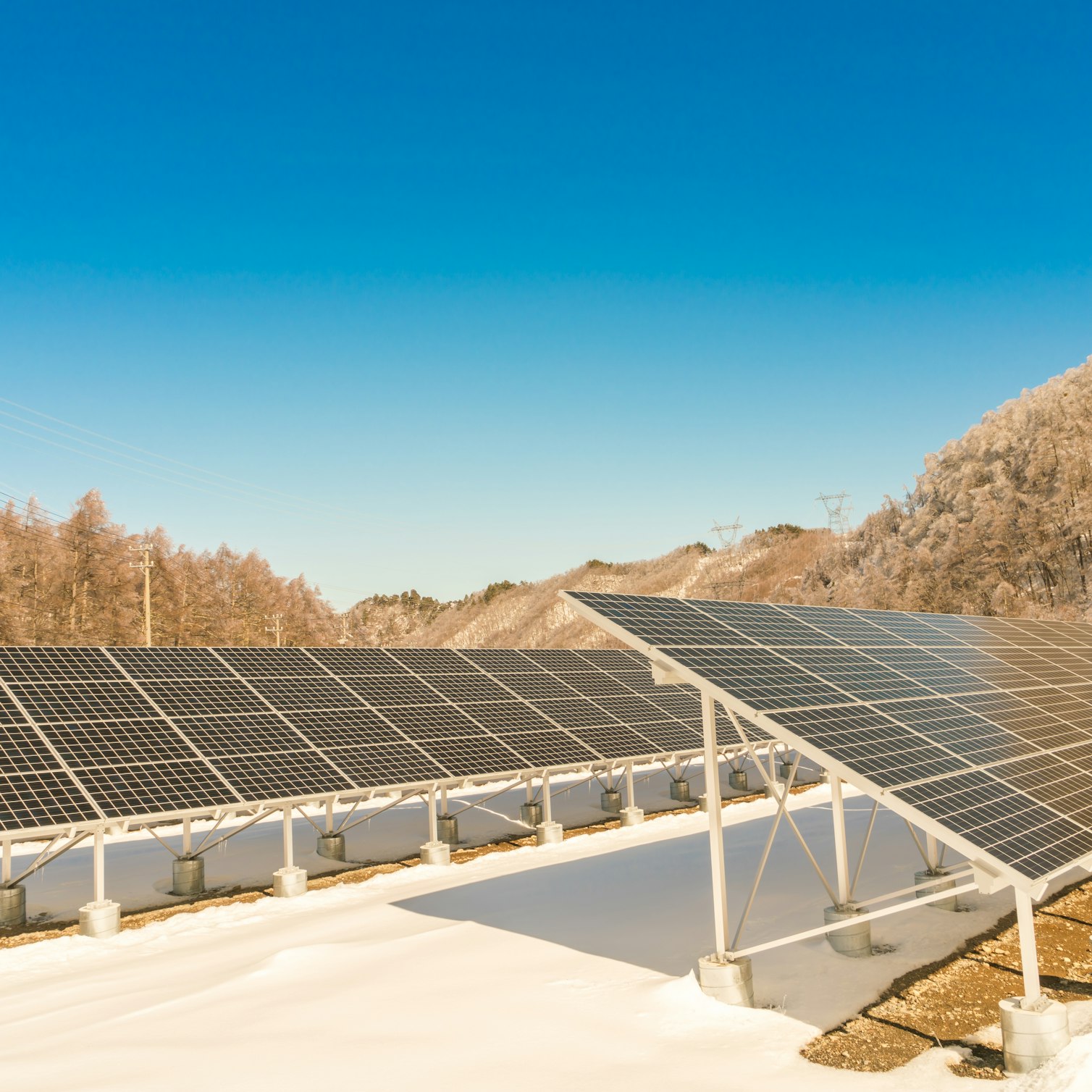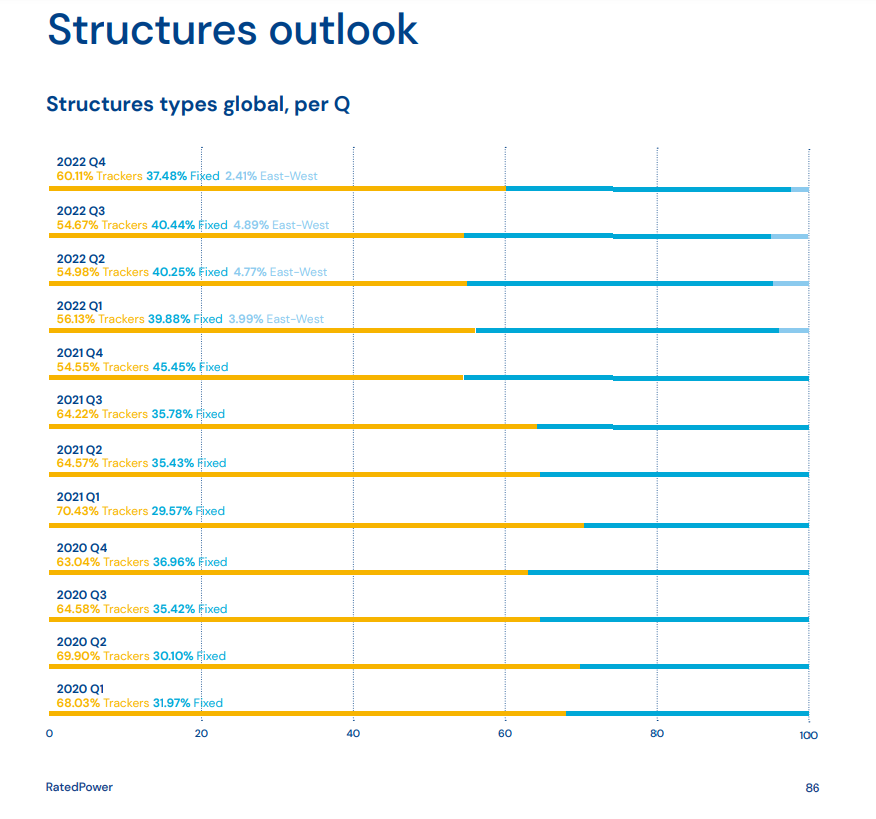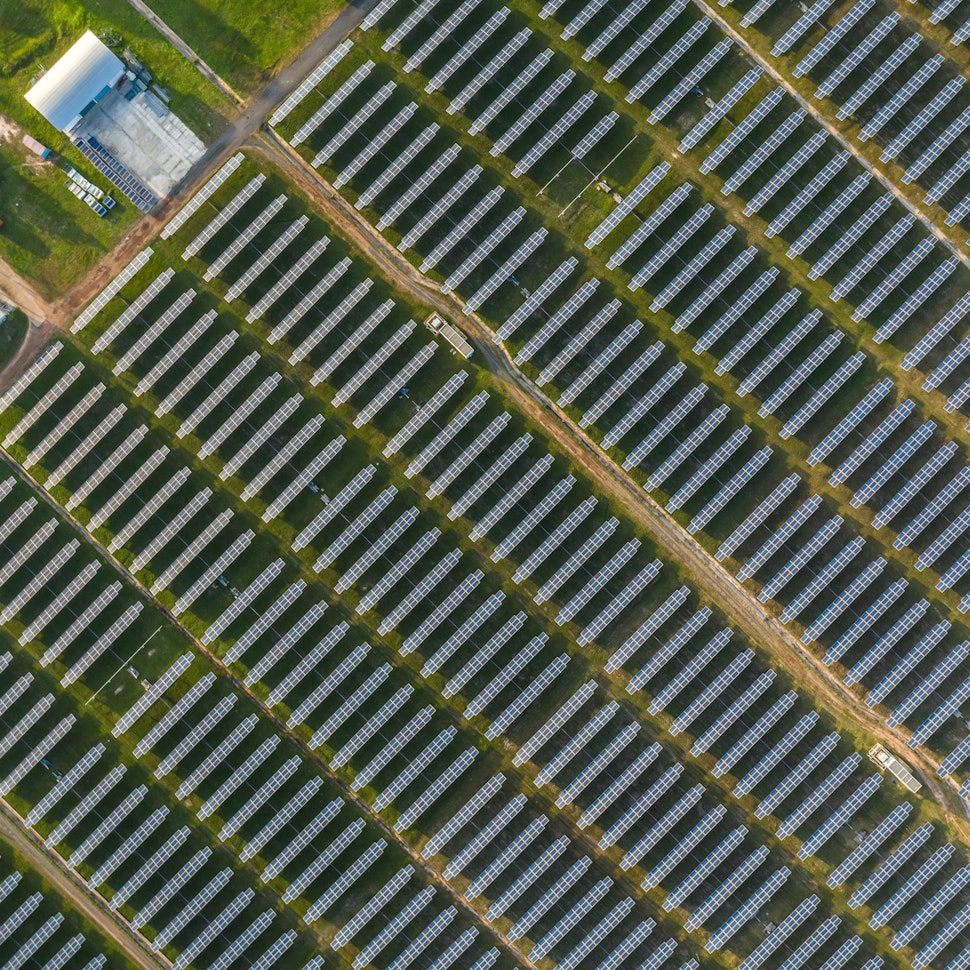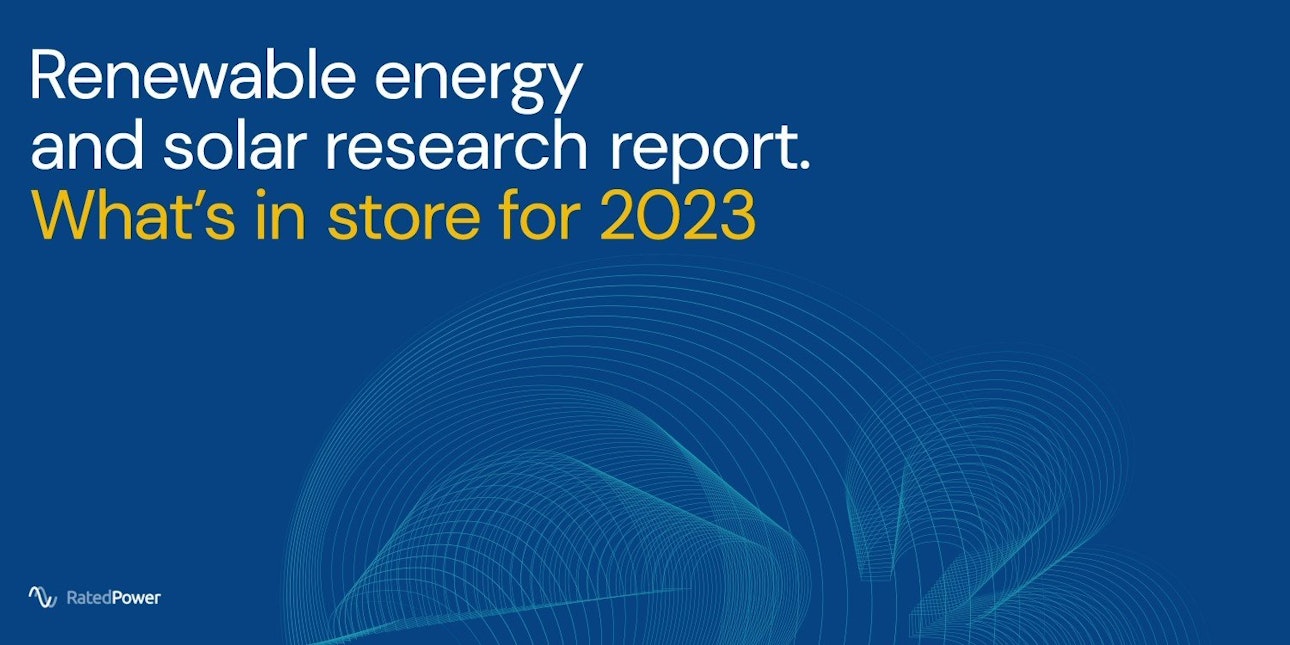- Solar energy blog
- Discover the Top 5 most popular structures used in RatedPower
Discover the Top 5 most popular structures used in RatedPower
Choosing the right structure can make or break your solar project. Discover the five most used structures in RatedPower according to our latest trends report.


Natalia Opie
Manager of Customer Success
Natalia Opie leads the Customer Success team for RatedPower. She is passionate for renewable energies and their role within the global environmental transition and has a thorough understanding of the solar industry, backed by her BSc in Energy Engineering, her MSc in Renewable Energy in Electrical Systems, and six years of experience partnering with clients of different countries to develop profitable, optimized assets.

The planning process for photovoltaic (PV) installations comes with many considerations. Elements such as site location, solar irradiation, budget constraints, and power generation targets are all important. Still, one variable that can be a crucial determinant of a successful PV project is the type of structure used.
There have been interesting trends in this space over the last few years. The adoption of string inverters has been on the rise, utilized in 53% of simulations in 2022, a considerable leap from 48% in 2021. But another exciting evolution is unfolding in the choice of structures for mounting solar panels. In 2022, tracker structures, dynamic devices that reorient solar panels to follow the sun throughout the day, saw significant use in larger plants.
That said, it doesn’t appear that these trends are universal, as region-specific preferences still prevail. While countries like Brazil, Saudi Arabia, and Australia have gravitated towards trackers, the Philippines, the UK, Germany, France, China, and Greece continue to lean on fixed structures. The selection between the two often boils down to factors such as latitude, solar irradiation, land availability, terrain complexity, and cost.
Want to dig deeper into the state of the industry and discover the key trends for this year and beyond? Download RatedPower’s 2023 Renewable Energy and Solar Research Report and see what renewable experts consider the most pressing issues for the sector.
Our platform has a number of structure options; let’s have a look at which ones are the most popular.
Types of structures
Trackers are dynamic in nature. They harness technology to adjust the position of solar panels throughout the day, meticulously following the sun’s trajectory. This ensures maximum exposure to the sun’s rays, which translates into higher energy production. One downside is that trackers typically come with a higher upfront cost, and their moving parts may require more maintenance than their stationary counterparts.
On the other side of the spectrum, we find fixed structures. These steadfast structures offer a solid, stationary mounting system for solar panels. The trick is to position them at an angle optimized for sunlight exposure. While fixed structures may not capture the sun’s energy as efficiently as trackers throughout the day, they offer the advantages of lower costs, simpler installation, and lower maintenance.
The third type is the east-west configuration. These consist of two rows of fixed structures with the axis in the north-south direction, one facing East and the other facing West.
As we mentioned in the previous section, the popularity of each type of structure varies by region. Even though the global trend in 2021 continued towards using fixed structures over trackers, Brazil didn’t follow suit, as almost all their projects (94%) used trackers. Saudi Arabia and Australia weren’t far behind, with over 90% of projects in those regions also favoring trackers. The reasons for this can be complex, ranging from higher sun exposure to favorable cost structures.
On the fixed side, the Philippines stood out, with 88% of its projects opting for fixed structures. Other countries in both Europe and Asia also showed a marked preference for fixed structures, with over 70% of projects in the UK, Germany, France, China, and Greece choosing this option.

Prefered type of structure per Q. Source: RatedPower's Renewable Energy Trends Report 2023 (page 86).
Top 5 structures used in RatedPower
In the world of RatedPower, structures play a pivotal role. While 41% of structure designs used are unbranded (trackers are usually branded and fixed structures usually unbranded), some specific structure models are favored more than others. Here are the top five structures used in RatedPower.
1: Generic 2-in-Portrait (2P)
The Generic 2-in-Portrait (2P) is the most used model in RatedPower, accounting for 12.85% of total designs. This fixed structure allows two panels to be installed portrait-style in a space-efficient layout. This efficient use of space is a major plus, particularly in installations where real estate is scarce. Depending on the tilt and arrangement, a 2P setup can also mitigate shading issues, enhancing overall system performance. One important element to consider behind this fixed structure being significantly more popular than the others is that it was the default setting on RatedPower, meaning many users ran their PV plant simulations without changing the default parameters given by the platform.
2: ArcelorMittal A-Motion
The ArcelorMittal A-Motion takes the second spot, making up 7% of total designs. The ArcelorMittal A-Motion tracker was built with safety and resilience in mind. It’s designed to withstand even the most extreme wind conditions and holds its ground without requiring repositioning during high winds. It comprises independent single rows, and each row functions autonomously, complete with self-power and the ability to communicate wirelessly. Its dual-beam table supports a single portrait-oriented module, simplifying the installation process while at the same time ensuring stability. Similar to number one, this is the default tracker, which is important to consider when assessing its popularity.
3. Generic 3P 10mm
In third place is the Generic 3P, accounting for 5% of total designs. This is different from the 2P (number 1 on the list) due to its additional panel. To delve deeper into their key differences, usually, 2P structures are chosen over 3P for tighter, more complex plant sites as they allow for a lower pitch distance and fit easier into irregular site shapes. Because they are smaller, the mechanical loads they experience are less than its 3P counterpart, making them better for areas prone to high winds. 3P’s additional panel, on the other hand, gives it a higher energy capacity while also benefiting sites prone to shading. The reason behind this is that if a third of a 3P structure is shaded, it will only cover a third of the strings, whereas, in the case of a 2P structure, half of the strings would be affected.
What to learn more about how to minimize your far shading losses in your PV system design? Join Altair Veiga, Principal Consultant at RatedPower, to learn how to optimize your system's efficiency and profitability despite challenging shading conditions in this webinar Mastering far shading: Strategies for designing efficient PV systems.
4. Nextracker NX Horizon
With 4% of total designs in RatedPower, Nextracker’s NX Horizon comes in fourth place. Unlike traditional straight-row designs, the NX Horizon adjusts to the natural terrain, negating the need for extensive land flattening or earthworks. This adaptive capability significantly reduces groundwork, saving time and resources during construction. It also requires less soil disturbance, which means less need for re-seeding. What this means is that it helps to preserve topsoil health and native vegetation and also helps to mitigate soil erosion issues over the project’s lifetime.
5: Generic 3P 20mm
The fifth most used structure type in RatedPower is the Generic 3P 20mm, which comprised 4% of total designs used, equal to the Nextracker NX Horizon. Like its counterparts, this generic structure offers flexibility for varied project needs. It does have some defining features, however. The extra spacing in this structure improves airflow, thereby cooling the panels. As a result, the system’s overall efficiency is improved. More importantly, 20 mm spacing is more commonly used to ensure that the panels don't touch. As heat causes metals to swell, the extra space accommodates this expansion.
While these structures are the most popular ones in RatedPower, the best fit for your project requires a careful analysis of specific project needs, budget, site conditions, and energy goals. The beauty of solar PV systems lies in their adaptability to a variety of needs, a principle highlighted by the differences between these popular structures.
Discover the future of renewable energy and gain exclusive insights from RatedPower’s expert-crafted 2023 trends report. Sign up now for access.
Latest stories
Related posts
Market analysis
Power where it’s needed: Solving LatAm’s grid instability with distributed solar and storage
Find out how a bottom-up approach is solving LatAm’s grid instability, with community-led solar and storage projects giving people control over their energy.
Updated 29 DEC, 25

Market analysis
Powering through the peak: Why solar + storage is gaining momentum in MENAT
Discover how MENAT is building a functioning solar economy and why rising peak demand during extreme heat is squeezing its energy architecture.
Updated 11 DEC, 25


Market analysis
The rise of utility-scale PV + storage plants in Italy
Discover how Italy’s latest policies and auctions are driving utility-scale solar and battery storage projects to meet ambitious 2030 targets.
Updated 4 DEC, 25

- RatedPower
- Solar energy blog
- Discover the Top 5 most popular structures used in RatedPower
 Watch a demo
Watch a demo Ask our AI Product Expert
Ask our AI Product Expert

